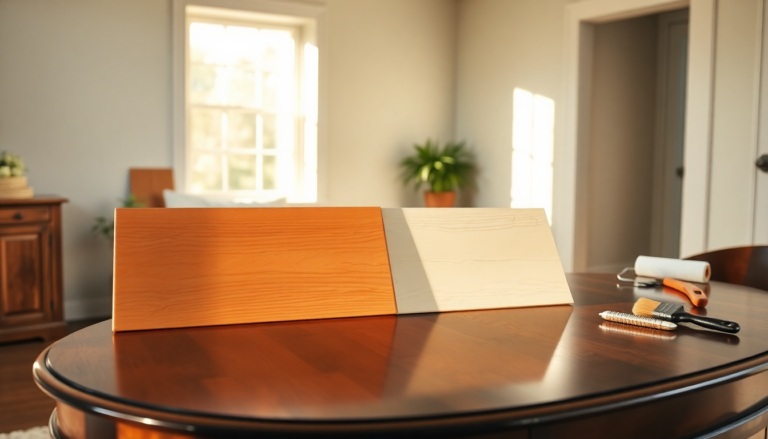Argomenti trattati
Choosing the right paint for your project can feel a bit like navigating a maze, can’t it? With so many options to consider, from the color to the finish, it’s easy to feel overwhelmed. Among the most popular finishes are satin and semi-gloss, each bringing its own set of benefits and visual appeal. But do you really understand the differences between these two? The nuances between them can make a world of difference in how your painted surfaces look and perform.
Understanding Sheen: Satin vs Semi-Gloss
Let’s break it down: in the painting world, “sheen” is a term you’ll hear a lot. It essentially refers to how light interacts with your paint once it’s dried. Satin paint, for example, reflects a moderate amount of light. This results in a soft, inviting glow that can really enhance your home’s interior aesthetics. One of its standout features is its ability to mask minor imperfections thanks to its lower reflectivity.
On the flip side, semi-gloss paint has a higher sheen level, meaning it’s more reflective—think bright and shiny! This quality makes it perfect for highlighting architectural details and trim, as it draws the eye and provides a polished finish that can elevate the overall look of a space.
When weighing your options, it’s crucial to consider what your project truly needs. For instance, satin paint is an excellent choice for high-traffic areas due to its durability and stain resistance—perfect for hallways, kitchens, and even kids’ playrooms. In contrast, semi-gloss typically shines in moisture-prone areas like kitchens and bathrooms, where easy cleaning is a must. Which areas in your home could benefit from these characteristics?
Application and Preparation
Now, let’s talk about application. While both finishes have their perks, the preparation and application processes can differ quite a bit. Satin paints demand some meticulous surface prep, including thorough cleaning and sanding, to ensure a smooth application. This attention to detail helps you achieve a finish that can stand up to the hustle and bustle of everyday life.
Semi-gloss paints also require a smooth surface, but they offer a bit more flexibility during application. Sure, it’s still a good idea to sand or fill imperfections beforehand, but if you have a well-prepped surface, you might find the application process to be simpler. Plus, the higher resin content in semi-gloss paints usually makes them more durable, though they can come with a heftier price tag. Is it worth it for your project?
One thing to keep in mind: while semi-gloss is a breeze to clean, touching up can be a bit tricky. If you need to retouch any areas, blending them seamlessly with the surrounding paint can require extra care. This is an important consideration if you want to maintain a flawless appearance over time.
Making the Right Choice for Your Project
So, how do you choose between satin and semi-gloss? It really boils down to the specific application and the look you want to achieve. For decorative elements and accents, semi-gloss is often the winner, thanks to its ability to highlight detail and withstand moisture. On the other hand, satin paint is typically the go-to for walls, especially in high-traffic areas where its durability and ability to conceal imperfections come into play.
Ultimately, your decision should be based on the aesthetic you’re aiming for and the practical considerations of your space. Whether you lean towards the subtle elegance of satin or the bright allure of semi-gloss, understanding the unique characteristics of each finish will empower you to make an informed choice. After all, you want your project to not only look great but also meet your functional needs—right?

